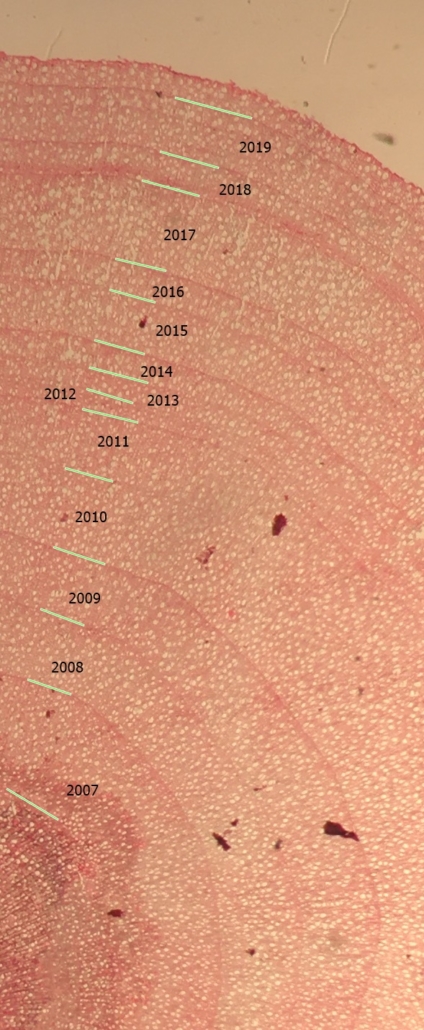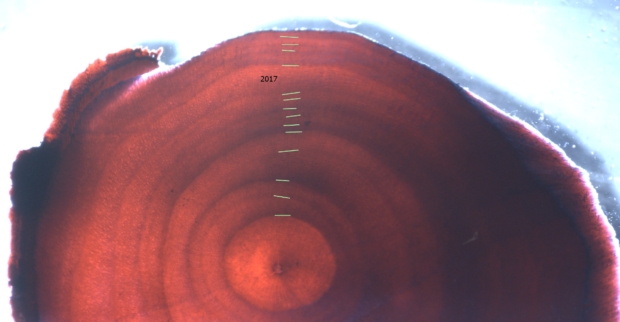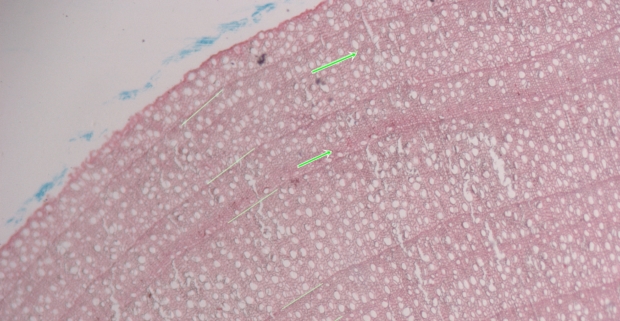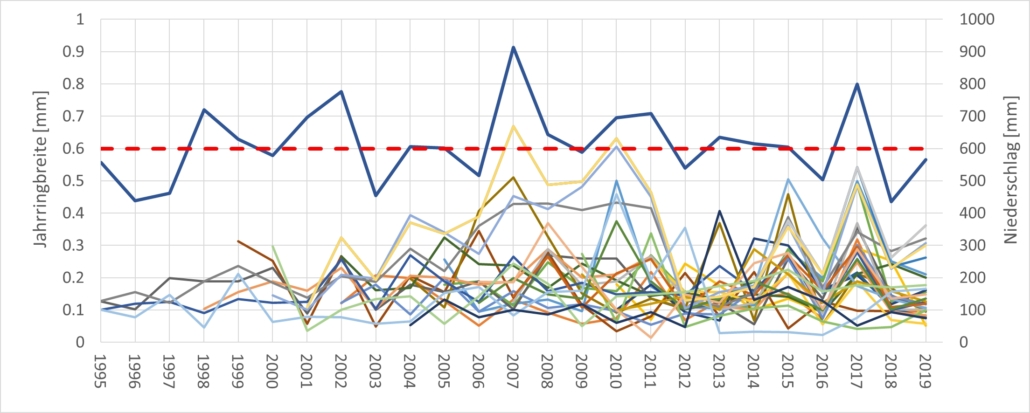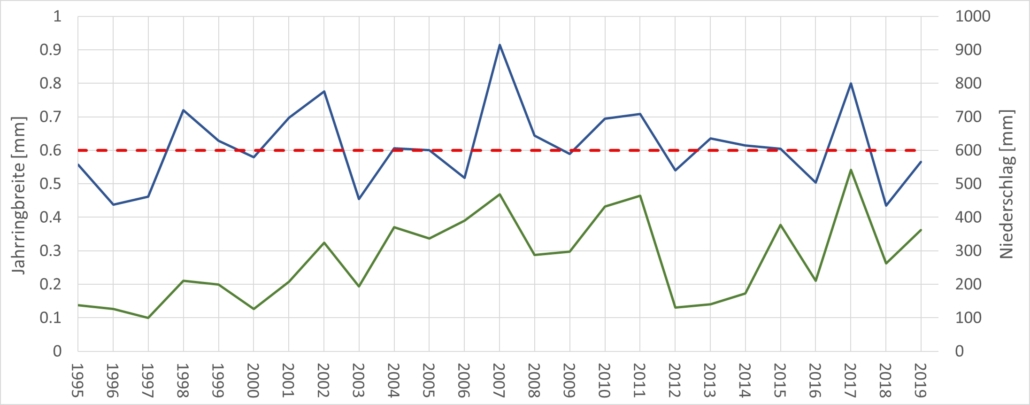

Annual ring analysis at common heather (Calluna vulgaris)
When plants are exposed to periodic environmental fluctuations, such as the seasons, they develop so-called annual rings over the course of the year. When the conditions improve for plants in the spring months, they develop large cells with thin cell walls, ensuring the transport of as much water and nutrients as possible. This wood is the light-colored portion of the growth ring and is called early wood. In the fall months, conditions gradually deteriorate again and the plant adjusts to winter dormancy. Now small cells with thickened cell walls are formed, which brings a dark wood coloration. This wood is therefore also called late wood and responsible for the visual formation of the annual ring.
With annually changing environmental conditions, growth rings of different widths are formed, which also vary between the individuals of a population.
In tests between 2017 and 2019, further characteristic differences were found in the flowering behavior. Questions to be clarified are now, whether there is a connection between the individual annual ring width patterns and the flowering behavior of the heather, and whether, in addition, conclusions can be drawn regarding the flowering behavior of the individual plants.
The number of flowers and fruits formed is a measure of reproductive capacity and thus of stand development of common heather. Furthermore, it also influences the occurrence and distribution of pollinators. Given the large communities formed by Calluna vulgaris in heathland, understanding the underlying processes of individual flowering phenology can help to estimate future stand development. In turn, conclusions can be drawn regarding ecosystem productivity and resilience (the ability of an ecosystem to return to its original state after disturbance). As a result, more effective conservation landscape management can be developed and applied for the European dry heath habitat type (4030).
For the study of the annual rings, 150 individuals were sampled in 2020. Hand and thin sections were performed to determine whether the latter, very time- and cost-intensive method is absolutely necessary. It has been shown that thin sections are nonetheless essential because, on one side, there are sometimes very narrow annual rings consisting of only a few rows of cells, which are difficult to identify in hand sections. On the other hand, annual rings can also form anomalies. So-called “false annual rings” occur when poor conditions prevail during the growing season, such as the very dry summers of 2018 and 2019. The plant reacts by forming late wood. The rains that followed in the fall improved the situation again and early wood was formed once more.
Example of an annual ring series, which correlates well with the measured precipitation. In the outer area, “false tree rings” can be seen again.
The left figure shows a hand cut with, for example, three narrow outer rings. However, the thin section shows that these are “false growth rings”. The second image marks the anomalies with arrows and annual rings with lines.
Hand cut of a Calluna sample
Thin section of the same sample
Further we assume that there can be different expressions of the annual rings in the plant organs. For this reason, each of the 150 plants were sampled once at the shoot, the root neck and the root. The analyses showed that the annual ring series of the different sections of a plant usually coincide.
On the left the shoot, then the root neck and on the right the root (recognizable by the missing pith in the middle). The shoot section shows only four annual rings, since the area on which the sample was taken was burned four years earlier.
Splitting the color channels makes the annual rings more visible, which helps to identify them.
The investigations have confirmed a high variability between the individuals. The average age of the individuals studied to date is 16 years.
Illustration of the annual ring series in the lower area. The upper curve represents the precipitation in the Kyritz-Ruppiner Heide with the critical threshold (red dashed) needed for the long-term conservation of heather.
Based on the individual annual ring series a so-called chronology is created, which can be seen on the second diagram. It shows that it interacts with the precipitation curve. This indicates that precipitation is a decisive factor for the growth of common heather.
Chronology of the individual annual ring series
The determination of the annual rings has not yet been completed for all individuals, which is why there are no results yet regarding the relationship with flowering phenology.



